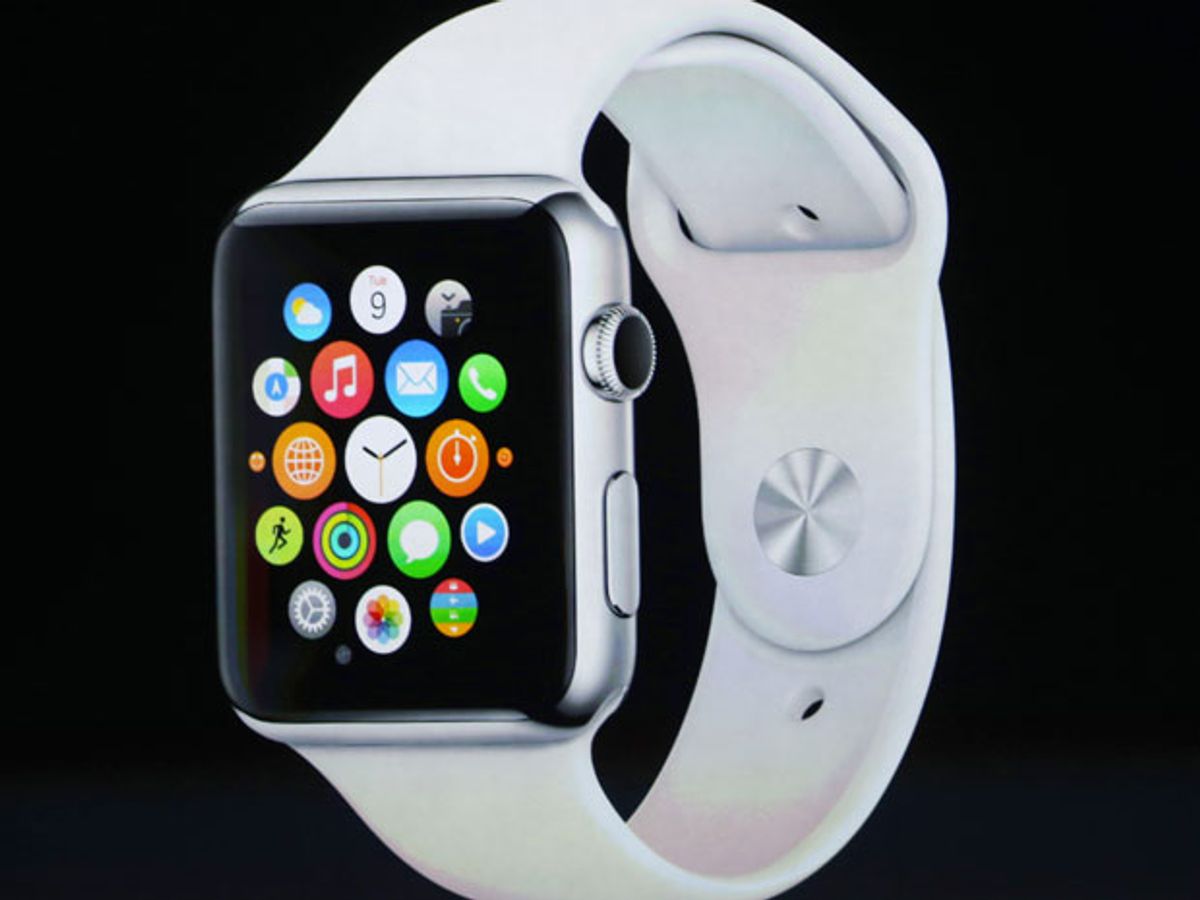Today was Apple’s big launch, as everybody who follows technology in anyway already knows (and probably tried to watch on the troubled live feed). Phones got bigger and the smart watch got smaller and finally comes in more than one size—including one tiny enough to fit on my too-small-for-the-Galaxy-Gear wrist.
But it’s what’s inside that little package that is really interesting—sensors, lots of them, along with a microelectromechanical system (MEMS) actuator that lets the watch reach out and touch you.
“This is an exciting day for people in the MEMS industry,” says Matthew Crowley, CEO of Vesper, a company that makes MEMS microphones. “By getting involved in the development of sensors, Apple validates that this is an important industry.”
The Apple Watch incorporates a heart monitor that uses two types of optical sensing systems, one type looking at visible light and one at infrared. This is an intriguing approach, Crowley said; many sports wearables use electrical conductivity to measure heart rate; Apple didn’t include this technology at all. And the optical technology Apple chose instead appears to be innovative; typical optical heart rate monitors look at infrared light only. These typical monitors, however, tend to have reliability issues, and work best when placed under the wrist, not on top, where you’ll most likely be wearing the watch, so it's not surprising that Apple was looking to improve on them. Crowley theorized that Apple has found a way of using visible light to improve the reliability of the sensor. Apps have been developed that use the normal iPhone camera to calculate heart rate through the changes in facial skin color, so it’s possible that this technology is coming into play as part of this system.
The microphone in the Apple watch is certainly a MEMS device, Crowley says. He’s of course particularly excited about Apples' audio choices because he runs a microphone company. “This means a whole new class of devices will use microphones,” Crowley enthused. For microphones, along with all the other sensors Apple is putting into its watches and phones, Crowley said, “the volumes will be huge, driving prices down. It will change the industry.” While the Apple Watch includes just one microphone, future versions, Crowley said, will likely move to arrays of microphones. And companies will be in a race to make existing devices smaller, he said; the move of sensors into watches will make size a much more important factor.
The MEMS industry has even more to be excited about because it doesn't just make sensors; it also makes tiny actuators. And that’s the kind of device that’s going to give the Apple Watch its ability to “touch” the wearer, a technology that until now has been called haptics, but going forward will likely be tagged with Apple’s newly-coined “taptics.” (Haptics, a word taken from Greek, was just never going to catch on, it's about time someone came up with something better.) Crowley says that unlike the vibration systems on most of today's phones, which use a rotating mass, Apple’s watch appears to contain a linear resonant actuator, or perhaps a piezoelectric actuator. “There are a lot of new components on this watch,” he says, “many of which Apple seems to have invented itself.”
Apple also added one more sensor to the iPhone (not of its own invention)—a pressure sensor that can determine when someone changes elevation, running up a hill, or climbing a flight of stairs. Until now, Samsung was the only major mobile device maker to include a pressure sensor in some of its products. And while Apple’s presentation made it seem like the only need for a pressure sensor is to better track exercise, the indoor navigation community has got to be thrilled: It’s really hard to keep track of a map user inside a shopping mall if you don’t know what floor they’re on.
Reaction from a healthcare innovator
The Apple Watch introduction was also being closely followed by people looking to improve healthcare. “We’re suffering a tsunami of chronic disease,” says Joseph Smith, chief medical and science officer for West Health. “We spend 80 percent of every healthcare dollar managing people with chronic conditions. It would be great if Apple would get into that system and make it work better; with their amazing sense of what works for the customer they could clearly do that.”
Smith appears to be cautiously optimistic about the Apple watch. On one hand, he says, “it doesn’t look like their transformational entry into the serious part of healthcare, it’s more of a best of breed of gadget rather than a new breed.”
However, he says, Apple today made it clear that the Apple Watch “will be a highly versatile platform which may hold promise for applications to help as we transform healthcare to be more automatic, coordinated, and connected.”
With all the sensors on the watch and smart developers bringing together information from multiple sensors, he says, we might get some surprises, say, monitoring tissue hydration using the available IR and natural light sensors on the watch.
Smith continues, “It remains to be seen whether Apple will transcend from the wearable gadget space to becoming a serious participant in healthcare.”
The Apple Watch is due to sell in 2015 for $350.
Tekla S. Perry is a former IEEE Spectrum editor. Based in Palo Alto, Calif., she's been covering the people, companies, and technology that make Silicon Valley a special place for more than 40 years. An IEEE member, she holds a bachelor's degree in journalism from Michigan State University.



